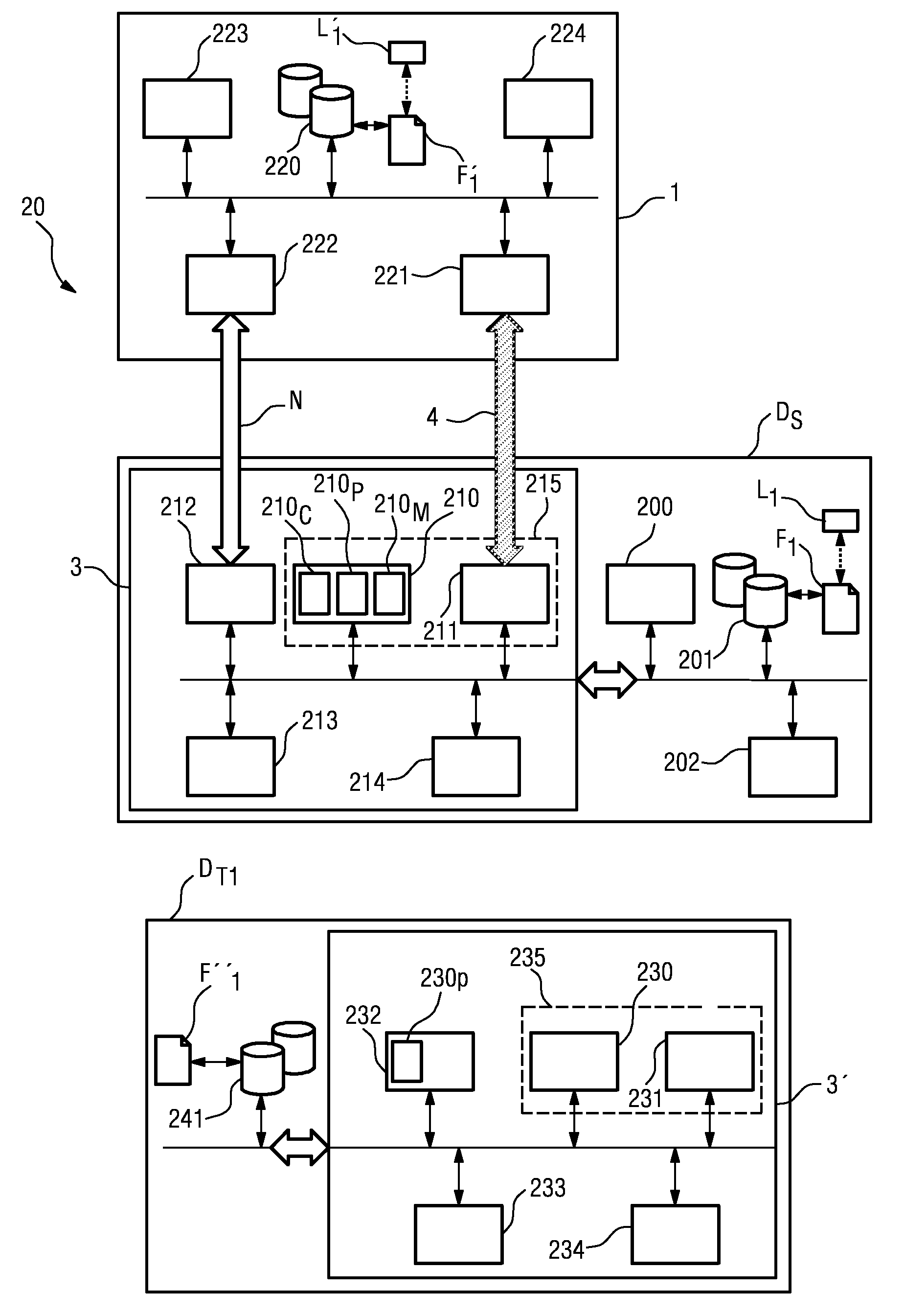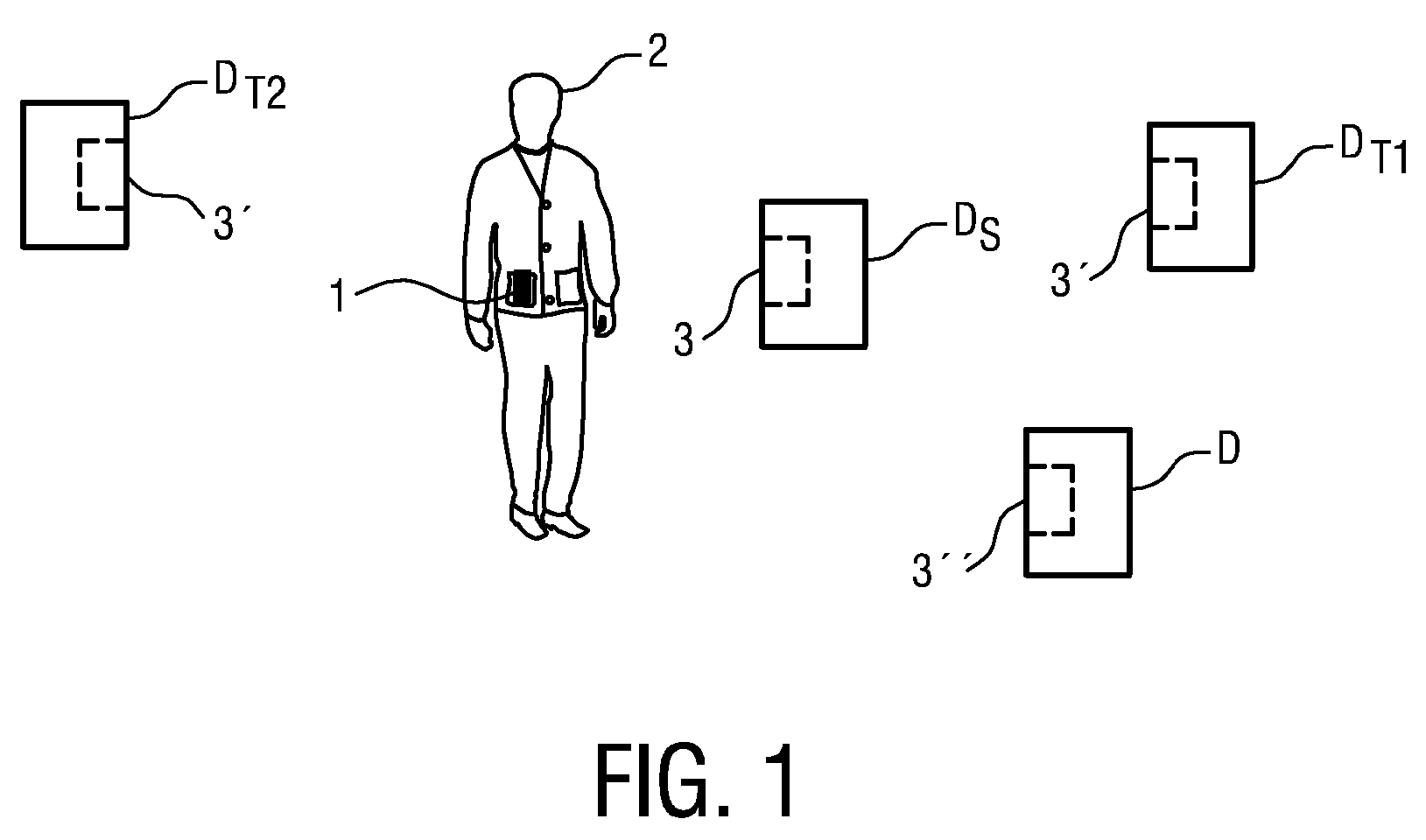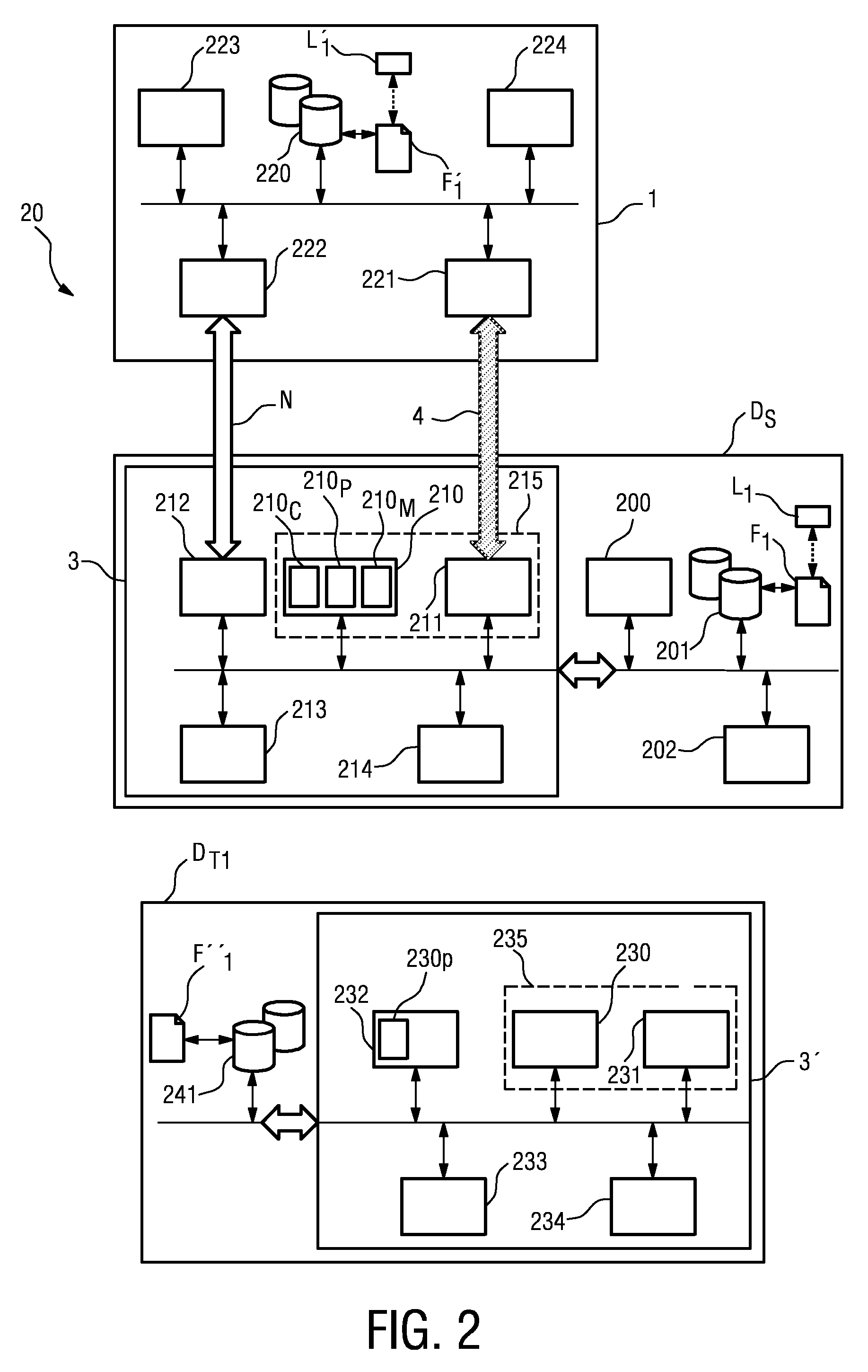Method of transferring application data from a first device to a second device, and a data transfer system
a technology of application data and data transfer system, which is applied in the field of transferring application data from a first device to a second device, and a data transfer system, can solve the problems of diskette damage, diskette memory capacity is not very large, and diskette writing is generally quite slow
- Summary
- Abstract
- Description
- Claims
- Application Information
AI Technical Summary
Benefits of technology
Problems solved by technology
Method used
Image
Examples
Embodiment Construction
[0036]In the diagrams, like numbers refer to like objects throughout.
[0037]FIG. 1 shows a user 2 with a memory device 1 according to the invention, and a number of devices D, DS, DT1, DT2. The user is shown to be carrying the memory device 1 in his pocket. However, the memory device 1 could be carried in any convenient location on the person of the user 2, for example incorporated into a shoe, or attached to or incorporated into a belt. For the purposes of illustration, the user 2 is shown in the vicinity of all of the devices D, DS, DT1, DT2, but it will be understood that a data transfer, as will be explained in detail below, can take place between the memory device 1 and a single device D, DS, DT1, DT2. Using the method according to the invention, the user 2 can cause a wireless radio connection or network to be established between the memory device 1 and one or more of the devices D, DS, DT1, DT2, simply by touching any of the devices D, DS, DT1, DT2 that is to be included in th...
PUM
 Login to View More
Login to View More Abstract
Description
Claims
Application Information
 Login to View More
Login to View More - R&D
- Intellectual Property
- Life Sciences
- Materials
- Tech Scout
- Unparalleled Data Quality
- Higher Quality Content
- 60% Fewer Hallucinations
Browse by: Latest US Patents, China's latest patents, Technical Efficacy Thesaurus, Application Domain, Technology Topic, Popular Technical Reports.
© 2025 PatSnap. All rights reserved.Legal|Privacy policy|Modern Slavery Act Transparency Statement|Sitemap|About US| Contact US: help@patsnap.com



